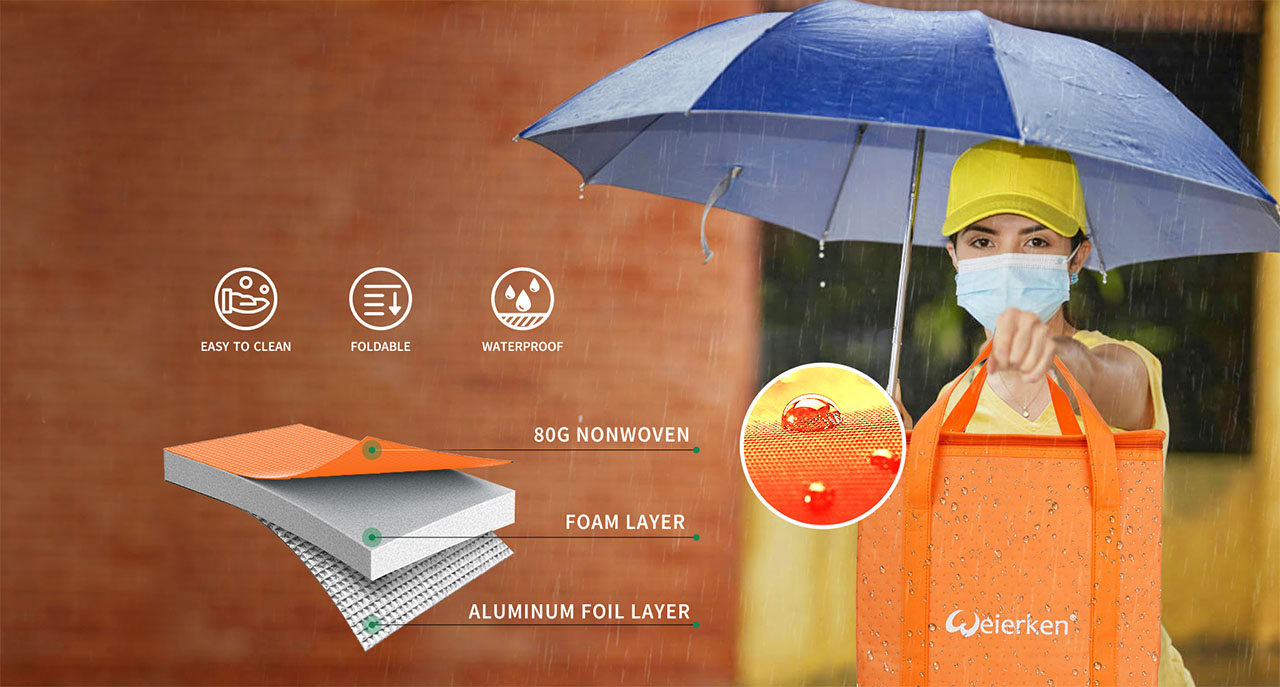Making a bulk order for food warmers is a significant decision that impacts daily operations, customer satisfaction, and your bottom line. Whether you’re a caterer, a restaurant owner managing multiple outlets, or a cloud kitchen operator, choosing the right equipment requires careful consideration. Rushing this process can lead to inefficiencies and unexpected costs. This guide outlines the essential questions you need to ask to ensure your investment in a food warmer bulk order is sound, efficient, and perfectly tailored to your business needs. As we explore these critical areas, we’ll highlight how a brand like Weierken approaches these considerations, providing a benchmark for your evaluation.

Defining Your Needs and Usage Scenarios
Before you even look at product catalogs or request quotes, you must have an absolute clarity on how and where the food warmers will be used. This foundational step dictates every subsequent choice.
What is the Primary Application?
The occasion for using the food warmer defines its required features.
- Buffets & Catered Events: Here, presentation is as crucial as performance. You might need units with sleek, stainless-steel finishes, integrated sneeze guards, and precise temperature controls to keep food looking and tasting fresh for the duration of an event. Consistency across multiple units is key for a professional setup.
- Food Delivery: For this high-mobility scenario, durability and portability are paramount. Food warmers need to withstand constant movement, potential bumps, and should have excellent heat retention to ensure meals arrive hot. You might prioritize lighter, yet robust, models with secure, leak-proof lids.
- Banquet Holding: In a large-scale kitchen, the focus is on high capacity and holding temperature for extended periods. You’ll need heavy-duty warmers that can reliably maintain safe serving temperatures for dozens or even hundreds of plates, often requiring integration into a heated pass.
Volume and Variety of Items
Quantifying your needs prevents you from under or over-investing.
- Quantity: How many meals do you need to keep warm simultaneously during your peak service? A bulk order for a school cafeteria will differ vastly from one for a high-end hotel.
- Diversity: Are you holding uniformly sized pans of lasagna, or a variety of items like soups, sauces, rolls, and proteins? This determines whether you need standard pan sizes, compartments, or a combination of different warmer types.
Selecting Capacity and Specifications
With your usage scenarios defined, you can now drill down into the physical specifications of the units.
Matching Capacity to Daily Output
Your average and peak daily output should directly inform the capacity of your warmers. A common mistake is ordering units that are too large, wasting energy, or too small, leading to operational bottlenecks. Calculate the total volume of food you need to hold at your busiest time and select models that can accommodate that. For businesses with fluctuating demand, a mix of large-capacity and smaller, more agile units might be the ideal solution. Brands like Weierken often provide a range of sizes, allowing you to create a customized fleet for your bulk order.
Internal Configuration for Efficiency
The inside of the warmer is where organization happens.
- Layers and Partitions: Do you need stacked units to save on counter space? Would internal dividers help you keep different dishes separate and easily accessible? For instance, a partitioned well is perfect for holding different sauces without cross-contamination.
- Custom Interiors: Some operations have unique needs. If your standard servingware is non-standard, inquire about the possibility of custom-designed liners or racks. This level of customization, often available with large orders, can dramatically improve workflow.
Energy Efficiency and Thermal Performance
This is the heart of the food warmer’s function. It’s not just about getting hot; it’s about staying hot efficiently.
Required Holding Duration
Ask the manufacturer for data on heat retention. How long will a fully loaded unit maintain a safe serving temperature (typically above 140°F or 60°C) after being switched on or pre-heated? This is critical for extended service periods, catering events, or during power-contingency planning. The Weierken engineering team, for example, emphasizes consistent thermal performance, ensuring that your food doesn’t drop into the “danger zone” during crucial serving hours.
Smart Features for Control and Savings
Modern food warmers offer features that go beyond a simple on/off switch.
- Energy-Saving Modes: Some models include programmable timers or eco-modes that reduce power consumption once the target temperature is reached, leading to significant savings on electricity bills over time.
- Zonal Temperature Control: For units with multiple compartments, independent temperature controls are a game-changer. This allows you to hold delicate sauces at one temperature and roasted meats at another, ensuring optimal quality for every dish. This level of control is a sign of a premium product.
Materials and Hygiene Standards
In the food industry, cleanliness is non-negotiable. The materials used in construction directly impact safety, durability, and maintenance effort.
Interior Materials for Easy Cleaning
The inner liner or chamber should be made of a non-porous, food-grade material that is resistant to stains and odors. High-quality stainless steel is often the gold standard due to its durability and ease of cleaning. Ensure that the surface has no hard-to-clean crevices where bacteria can proliferate. It must withstand frequent washing with commercial-grade detergents without degrading.
Exterior Durability for Demanding Environments
The outer shell takes the brunt of daily wear and tear.
- Impact Resistance: Kitchens are busy places. A sturdy outer shell that can withstand accidental knocks from carts or trays is essential.
- Corrosion Resistance: The constant presence of moisture, steam, and cleaning chemicals requires a finish that won’t rust or corrode. A powder-coated or high-grade polished stainless steel exterior is typically recommended for long-term use. This robust build quality is what you’d expect from a professional brand.
Procurement and After-Sales Support
A bulk order is a business relationship. The terms of the sale and the support you receive afterward are as important as the product itself.
Bulk Order Advantages and Customization
A significant purchase should come with significant benefits.
- Volume Discounts: Always negotiate pricing for a bulk order.
- Branding: Can the supplier add your company’s logo or customize the color? This turns functional equipment into a branding asset.
- Accessories: Inquire about bundled accessories. For instance, when placing a food warmer bulk order, it might be efficient to also secure a heavy duty bag bulk order for transport, or a set of matching racks and pans.
Warranty and Service Network
A long and comprehensive warranty is a sign of the manufacturer’s confidence in their product.
- Policy Details: What exactly is covered, and for how long?
- Service Accessibility: If a unit fails, how quickly can it be repaired? Is there a local service network or do units need to be shipped away? Prompt access to spare parts is crucial to avoid prolonged downtime.
Supply Chain and Delivery Capabilities
In today’s global environment, a supplier’s ability to deliver on time is a critical competitive advantage.
Reliability in Fulfilling Large Orders
Can the supplier guarantee a delivery date for your entire food warmer bulk order? Delays in receiving equipment can disrupt business plans and launch schedules. Inquire about their inventory levels and production lead times.
Proven B2B Experience
A supplier with a track record of serving other business clients in your industry is preferable. They will understand your operational challenges and requirements. Ask for case studies or references from other catering companies, hotel chains, or food delivery services they have supplied. A reputable brand will have this experience readily available.
Finalizing a food warmer bulk order is a complex but manageable process when you methodically address these key questions. It’s an investment that demands a balance between immediate operational needs and long-term value. By thoroughly vetting your requirements against a supplier’s offerings—be it in terms of product specs, support, or logistical capability—you position your business for success. As you move forward with your decision, consider how a trusted manufacturer like Weierken aligns with these critical parameters, ensuring that your investment supports seamless service and sustained growth for years to come.
Frequently Asked Questions (FAQs)
Q1: What is the typical lead time for a large bulk order of food warmers?
A1: Lead times can vary significantly depending on the manufacturer and the order size and customization. Standard large orders may take 4-8 weeks. It’s crucial to discuss timelines upfront with your supplier and get a written delivery schedule. For complex customizations, expect a longer lead time.
Q2: Are the food warmers compliant with international food safety standards?
A2: Reputable manufacturers design their products to meet major international safety and hygiene standards, such as those from NSF, CE, or UL. Always request and verify the specific certifications for the models you are considering to ensure compliance with your local health regulations.
Q3: Can I order compatible accessories, like a set of heavy-duty transport bags, with my main order?
A3: Yes, most suppliers encourage this. Bundling accessories like a heavy duty bag bulk order alongside your food warmers is often cost-effective and ensures you have a complete, coordinated system for both holding and transportation. It also simplifies logistics and procurement.
Q4: What is the most common cause of failure in commercial food warmers, and how is it addressed under warranty?
A4: The most common issues typically involve the heating elements or the thermostat controls. These are considered manufacturing defects and are usually covered under a standard warranty. Wear-and-tear parts like seals or gaskets may have a shorter coverage period. Always clarify what components are included in the warranty.
Q5: For a mixed menu, is it better to have one large unit with partitions or several smaller, specialized warmers?
A5: This depends on your kitchen layout and service flow. Several smaller units offer flexibility—you can place them where needed and set different temperatures for each. A single large unit with partitions saves space and may be more energy-efficient but offers less temperature zoning flexibility. Many operations find a hybrid approach works best.




